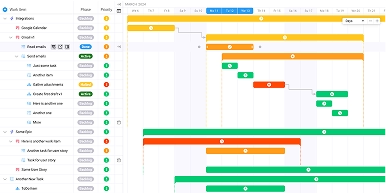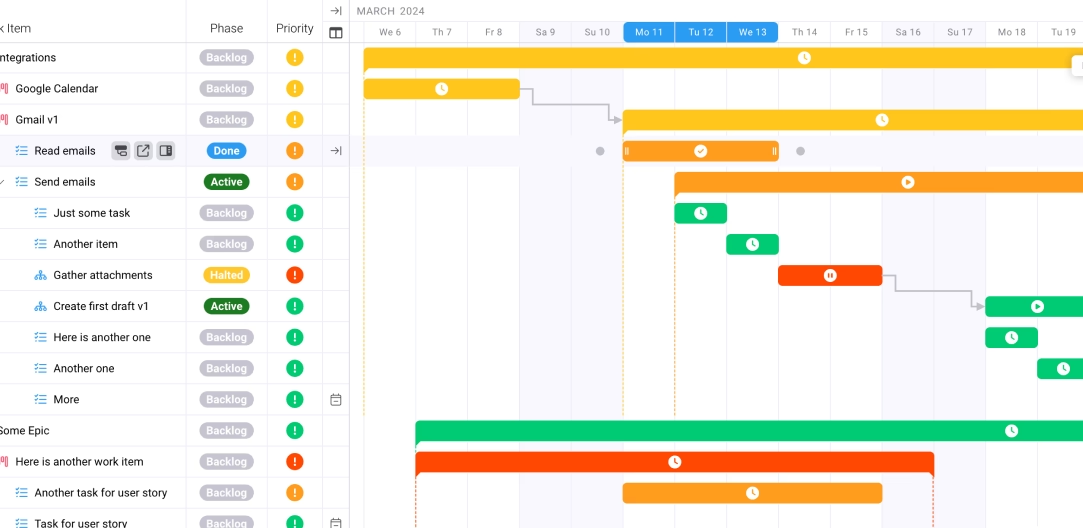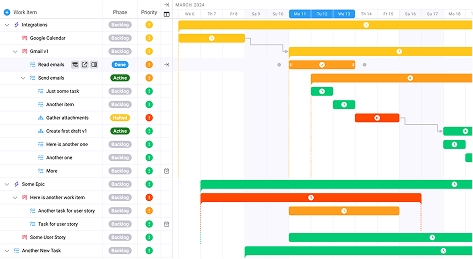
Marketing Attribution Made Simple: A Guide for Agency Account Managers
Key takeaways:
- Master Multi-Touch Attribution: Move beyond last-click models to capture the complete customer journey and demonstrate true campaign value
- Implement Advanced Attribution Frameworks: Use AI-powered tools and data-driven models to increase campaign performance by up to 27%
- Streamline Client Reporting: Create compelling attribution reports that clearly show ROI and justify marketing spend to retain clients
- Optimize Budget Allocation: Use attribution insights to reallocate budgets toward high-performing channels and eliminate waste
Picture this: Your biggest client storms into your office, demanding to know why their £50,000 campaign generated only £30,000 in trackable revenue. Sound familiar? If you're an agency account manager, this scenario probably makes your stomach churn. The truth is, just 9% of marketers feel their organizations truly understand attribution, yet marketing attribution has become the make-or-break factor for client relationships in 2025. This comprehensive guide will transform how you approach marketing attribution, giving you the tools to turn those uncomfortable client conversations into triumphant success stories.
The Current Challenge: Why Traditional Attribution Falls Short
Agency account managers face an unprecedented challenge in 2025. 98% of marketing professionals agree that marketing attribution is vital to the overall success of their marketing strategy, yet the reality on the ground tells a different story. 63% of marketers struggle to measure and track activity between the funnel stages, creating a massive gap between expectations and execution.
The problem isn't just theoretical—it's hitting agencies where it hurts most. Clients expect agencies to show demonstrable results from their efforts in 2025, while simultaneously demanding more sophisticated campaigns across multiple channels. This creates a perfect storm where account managers must navigate increasingly complex customer journeys while proving concrete ROI.
Consider the modern customer journey: it takes, on average, 6-10 touchpoints before a consumer reaches a buying decision. Each touchpoint represents a potential point of failure in your attribution model. When clients see only the final conversion without understanding the full journey, they naturally question the value of earlier touchpoints—exactly those brand awareness campaigns and educational content pieces that agencies excel at creating.
The financial implications are staggering. The marketing attribution software market size was estimated at USD 4.74 billion in 2024 and is anticipated to grow at a CAGR of 13.6% from 2025 to 2030, indicating massive investment in solving this problem. Yet despite this investment, most agencies still rely on outdated attribution models that fail to capture their true impact.
Traditional last-click attribution particularly penalizes agencies because it ignores the creative strategy, content development, and brand-building activities that agencies are uniquely positioned to deliver. When a client sees that their Google Ad generated a conversion, they might question why they need an agency at all—completely missing the months of strategic positioning and content creation that made that final click possible.
The Strategic Framework: Building Your Attribution Foundation
The key to mastering marketing attribution lies in implementing a comprehensive framework that captures both immediate conversions and long-term brand impact. This isn't just about installing better tracking—it's about fundamentally changing how you structure campaigns and communicate value.
Start with First-Party Data Collection
Your attribution framework must begin with robust first-party data collection. Every campaign touchpoint should be designed not just to drive engagement, but to capture valuable customer interaction data. This means implementing UTM parameters strategically, setting up comprehensive event tracking, and ensuring every piece of content includes some form of user identification.
The advantage for agencies is significant: while clients often struggle with data collection across multiple vendors, agencies can implement unified tracking from day one. This gives you a competitive advantage in demonstrating comprehensive customer journey mapping that individual marketing tools simply cannot provide.
Implement Multi-Touch Attribution Models
Single-touch attribution models are killing agency value propositions. The solution lies in multi-touch attribution that recognizes the cumulative impact of your campaigns. However, choosing the right model requires understanding your client's specific business dynamics.
For clients with shorter sales cycles (under 30 days), time-decay attribution works exceptionally well, giving more credit to recent interactions while still acknowledging earlier touchpoints. For B2B clients with longer sales cycles, linear attribution often provides the most balanced view of campaign contribution.
The game-changer for agencies is implementing custom attribution models that weight creative touchpoints appropriately. Companies using AI-powered attribution see an average improvement of 27% in campaign performance across all channels, largely because these models can identify complex interaction patterns that simple rule-based models miss.
Create Attribution-Friendly Campaign Architecture
Most campaigns are structured for execution, not attribution. Forward-thinking agencies are redesigning their campaign architecture specifically to enhance attribution accuracy. This means creating distinct landing pages for each major touchpoint, implementing progressive profiling to build customer profiles over time, and designing content flows that naturally capture interaction data.
The key insight is treating attribution not as a measurement afterthought, but as a core design principle. When every campaign element is built with attribution in mind, the resulting data quality improves dramatically, leading to more accurate insights and stronger client relationships.
Implementation Tactics: Five Proven Strategies for Attribution Success
Strategy 1: Unified Tracking Implementation
The foundation of effective attribution starts with comprehensive tracking implementation. Despite the complexity of modern campaigns, 57.9% of marketers use a marketing attribution tool, indicating significant room for improvement in this area.
Your unified tracking approach should capture every meaningful interaction across all campaign touchpoints. This includes email opens and clicks, social media engagement, content downloads, website sessions, and offline interactions when possible. The key is ensuring consistent user identification across all these touchpoints.
Implement a customer data platform (CDP) that can merge anonymous and known user data, creating comprehensive user profiles that persist across sessions and devices. This technical foundation enables sophisticated attribution analysis that goes far beyond basic last-click measurement.
Strategy 2: Advanced Attribution Modeling
Moving beyond basic attribution requires implementing sophisticated models that reflect real customer behavior. Measuring and reporting marketing ROI effectively is crucial for client retention, which means your attribution model must provide actionable insights that clients can understand and act upon.
Consider implementing algorithmic attribution models that use machine learning to weight touchpoints based on their actual conversion impact. These models continuously learn from new data, automatically adjusting attribution weights as customer behavior patterns evolve.
For clients with complex B2B sales cycles, implement account-based attribution that tracks influence at the account level rather than just individual leads. This approach is particularly powerful for agencies managing multiple stakeholders and decision-makers within target accounts.
Strategy 3: Real-Time Attribution Reporting
Traditional monthly attribution reports are insufficient for modern campaign management. Weekly KPI tracking is essential for marketing project success, which means your attribution system must provide near real-time insights that enable rapid campaign optimization.
Implement dashboard systems that provide daily attribution updates, allowing you to identify underperforming touchpoints quickly and reallocate budget toward high-performing channels. This agility becomes a major competitive advantage when competing against agencies that rely on slower reporting cycles.
Modern project management platforms integrate directly with attribution systems, enabling seamless campaign oversight and optimization. This integration allows account managers to track attribution performance alongside traditional project metrics, creating a unified view of campaign success.
Real-time attribution also enables proactive client communication. Instead of waiting for monthly reports to reveal attribution insights, you can provide clients with ongoing updates that demonstrate continuous optimization and value creation.
Strategy 4: Cross-Channel Attribution Integration
Modern campaigns span multiple channels, each with different tracking capabilities and limitations. Effective project management frameworks improve campaign attribution accuracy by ensuring consistent data collection and analysis across all campaign elements.
Develop standardized attribution protocols that work across paid social, search advertising, email marketing, content marketing, and offline activities. This might involve implementing unified UTM parameter structures, consistent conversion goal definitions, and standardized reporting formats.
Advanced project management software enables seamless integration between attribution systems and campaign execution, while CRM platforms help track attribution data alongside customer relationship metrics. For agencies managing client billing, integrating attribution data with billing systems ensures accurate ROI calculations for client reporting.
The key challenge is reconciling different attribution models used by various platforms. Google Analytics might use different attribution logic than Facebook Ads Manager, creating discrepancies that confuse clients. Address this by creating master attribution reports that reconcile platform-specific data into unified insights.
Strategy 5: Attribution-Based Budget Optimization
The ultimate goal of attribution is improving campaign performance through better budget allocation. Use attribution insights to identify which channels and touchpoints drive the highest-quality conversions, then gradually shift budget toward these high-performing areas.
Implement systematic budget reallocation protocols based on attribution data. Effective resource planning ensures optimal allocation of both budget and team resources based on attribution insights. Time tracking integration helps correlate attribution performance with actual campaign execution effort, providing deeper insights into true campaign profitability.
This approach requires discipline and clear communication with clients through client portals that provide transparent access to attribution data and optimization rationale. Budget reallocation based on attribution insights should be presented as strategic optimization, not reactive problem-solving.
Measuring Success: KPIs and Metrics That Matter
Attribution Accuracy Metrics
The first category of success metrics focuses on attribution accuracy itself. Track the percentage of conversions that can be attributed to specific touchpoints versus those that remain "dark" or unattributed. High-performing attribution systems typically attribute 80-90% of conversions to specific marketing activities.
Monitor attribution model stability over time. If your attribution weights fluctuate dramatically month over month, it suggests data quality issues or model configuration problems. Stable attribution models provide more reliable insights for budget allocation decisions.
Measure cross-channel attribution coverage to ensure you're capturing interactions across all campaign touchpoints. Gaps in attribution coverage often reveal technical implementation issues that undermine overall measurement accuracy.
Campaign Performance Improvements
Track specific improvements in campaign performance that result from attribution insights. This includes increased conversion rates from optimized touchpoint sequences, improved cost per acquisition from better budget allocation, and enhanced customer lifetime value from improved customer journey design.
Monitor the time-to-optimization metric: how quickly can you identify and act on attribution insights? High-performing agencies typically see attribution-driven optimizations within 2-3 weeks of campaign launch, while slower agencies may take months to identify optimization opportunities.
Client Satisfaction and Retention Metrics
Attribution success ultimately shows up in client relationships. Track client satisfaction scores specifically related to campaign measurement and reporting. Clients with clear attribution visibility typically show higher satisfaction scores and longer contract terms.
Monitor client retention rates for accounts with sophisticated attribution systems versus those with basic tracking. The investment in advanced attribution typically pays for itself through improved client retention and contract renewals.
Measure client budget increases over time. When clients clearly understand campaign attribution and see proven ROI, they typically increase marketing spend. Attribution becomes a growth driver, not just a measurement tool.
Revenue Impact Metrics
Track the revenue impact of attribution-driven optimizations. This includes direct revenue increases from improved campaign performance and indirect revenue from client budget increases resulting from better attribution reporting.
Monitor cost savings from attribution insights. Identifying underperforming touchpoints and channels often reveals significant cost-saving opportunities that improve overall campaign profitability.
Measure the speed of revenue impact from attribution optimizations. The faster you can translate attribution insights into revenue improvements, the more valuable your attribution system becomes.
Future Considerations: Emerging Trends and Next Steps
Privacy-First Attribution Models
The future of marketing attribution must account for increasing privacy regulations and the deprecation of third-party cookies. Attribution is evolving into an indispensable strategic discipline that relies more heavily on first-party data and privacy-compliant tracking methods.
Agencies must invest in server-side tracking implementations that reduce reliance on client-side cookies while maintaining attribution accuracy. This technical shift requires significant planning but positions agencies as privacy-compliant partners for enterprise clients.
Consider implementing privacy-preserving attribution models that use aggregated data and statistical modeling rather than individual user tracking. These approaches maintain attribution insights while respecting user privacy preferences.
AI-Enhanced Attribution Analysis
Artificial intelligence is transforming attribution from a reactive measurement tool into a predictive optimization engine. Future attribution systems will not just report what happened, but predict which touchpoint combinations will drive optimal results.
Implement predictive attribution models that forecast conversion probability based on current touchpoint interactions. This enables proactive campaign optimization rather than reactive adjustments after conversions occur.
AI-enhanced attribution also enables dynamic personalization based on attribution insights. Understanding which touchpoint sequences work best for different customer segments allows for highly targeted campaign personalization that improves overall attribution performance.
Unified Customer Experience Attribution
The future of marketing attribution extends beyond traditional marketing touchpoints to include customer service interactions, product usage data, and post-purchase behavior. This comprehensive attribution approach provides a complete view of customer value creation.
Develop attribution models that include customer success metrics, support interactions, and product engagement data. This comprehensive approach helps agencies demonstrate their impact on overall customer lifetime value, not just initial conversions.
Consider implementing cross-departmental attribution that shows how marketing activities influence sales team performance, customer success metrics, and product adoption rates. This broader attribution scope significantly strengthens the agency value proposition.
Marketing attribution is no longer optional for agency account managers—it's the foundation of client success and agency growth. The strategies and frameworks outlined in this guide provide a roadmap for implementing sophisticated attribution systems that demonstrate clear ROI and justify marketing investments. By mastering marketing attribution, you transform from an order-taker into a strategic partner, creating lasting client relationships built on measurable results and continuous optimization.
Modern platforms like Ravetree provide integrated solutions that combine project management, attribution tracking, and client reporting in unified systems designed specifically for marketing agencies. The investment in advanced attribution capabilities pays dividends through improved client retention, increased budgets, and stronger competitive positioning. As the marketing landscape continues to evolve, agencies with sophisticated attribution systems will capture disproportionate market share from competitors still relying on basic measurement approaches.
Frequently Asked Questions
What's the difference between first-touch and last-touch attribution for agencies?
First-touch attribution credits the initial interaction that brings a prospect into your funnel, which often favors brand awareness campaigns that agencies excel at creating. Last-touch attribution credits the final interaction before conversion, typically favoring performance channels like paid search.
How long does it take to implement a comprehensive attribution system?
A basic multi-touch attribution system can be implemented in 4-6 weeks, while advanced AI-powered attribution typically requires 3-4 months for full implementation and optimization.
What's the biggest mistake agencies make with attribution?
The biggest mistake is implementing attribution as an afterthought rather than designing campaigns specifically for attribution from the beginning. This leads to poor data quality and incomplete attribution insights.
How much should agencies invest in attribution technology?
Most successful agencies invest 3-5% of their total revenue in attribution technology and training, typically seeing 15-25% improvements in client retention and budget growth.
Can small agencies compete with enterprise attribution solutions?
Yes, cloud-based attribution platforms now provide enterprise-level capabilities at accessible price points, allowing small agencies to implement sophisticated attribution systems without massive upfront investments.
How do you handle attribution across offline and online channels?
Use unified customer identifiers, implement call tracking with attribution parameters, create unique landing pages for offline campaigns, and use statistical modeling to estimate offline campaign impact on online conversions.
What metrics matter most for proving attribution success to clients?
Focus on conversion rate improvements, cost per acquisition reductions, and customer lifetime value increases that result directly from attribution-driven optimizations rather than just attribution accuracy metrics.









